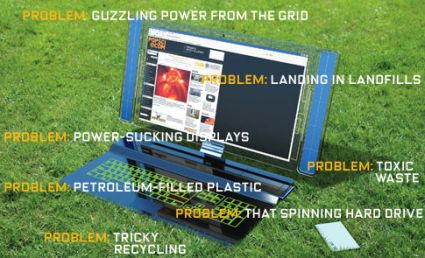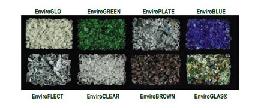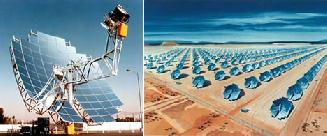
There are many urgencies and necessities, they should be the focus, but not the only ones – because ‘green‘ is the latest buzzword. We have gadgets and technologies transforming existence each day – though, jeopardizing simultaneously – a balance needs to be struck, but where? How can the gadgets, every single part of them, be made environment friendly?
Two years hence and laptops will rule the consumer markets outdoing the desktop sales – three years is the projected use and subsequently will raise a call for replacement, dumping the possession. Citing the dilemma just perfectly, designers plan to develop eco-friendly laptops – that’ll be a prized possession in the ever-depleting environment conditions.
A few complexities and their solutions have been highlighted that’ll play just perfect in the hands of the designers.
The plastic used is petroleum-filled – using bioplastics instead is the way out. Compared to the conventional plastic, bioplastics require less oil and energy – though a catch remains, are they heat resistant or will they melt. Half-traditional plastic and half-bioplastics combinations have already come into use.
Upgrading laptops costs a fortune and so replacing by discarding the old (that leaks toxic material) remains the only alternative. However, soon upgrading the laptop could get cheaper than replacing it – manufacturers like Asus have already come out with a model that lets the user change parts by removing one panel.
Electricity deficits have been a hitch for the electronic devices – needing power to charge has been their biggest glitch. Solar energy has been an efficient and natural method of running devices and that’s the next thing that laptop producers aim at. Solar charged laptops already exist, while companies like MSI computers have developed – prototype laptop with photovoltaic cells integrated directly into its case.
Charging isn’t the only power hiccup – the laptop displays also consume a lot of power. LCD screens owing to the fluorescent backlight consume approximately half of the laptop’s power, though some do come with more power efficient LED’s but employing OLED’s could further reduce power consumption to a zilch.
Recycling laptops is a Herculean task, its expensive and laborious too, dismantlers find it baffling to locate the valuable parts, which require them to examine thoroughly, consuming time and energy. However, adding radio frequency to laptops the job could be made lot simpler for the recyclers.
Laptop manufacturing is as energy consuming as the device itself – setting up factories that are more power efficient and replacing the hard discs used with flash memory could help avert a major energy crisis.
[Source: Popsci]




